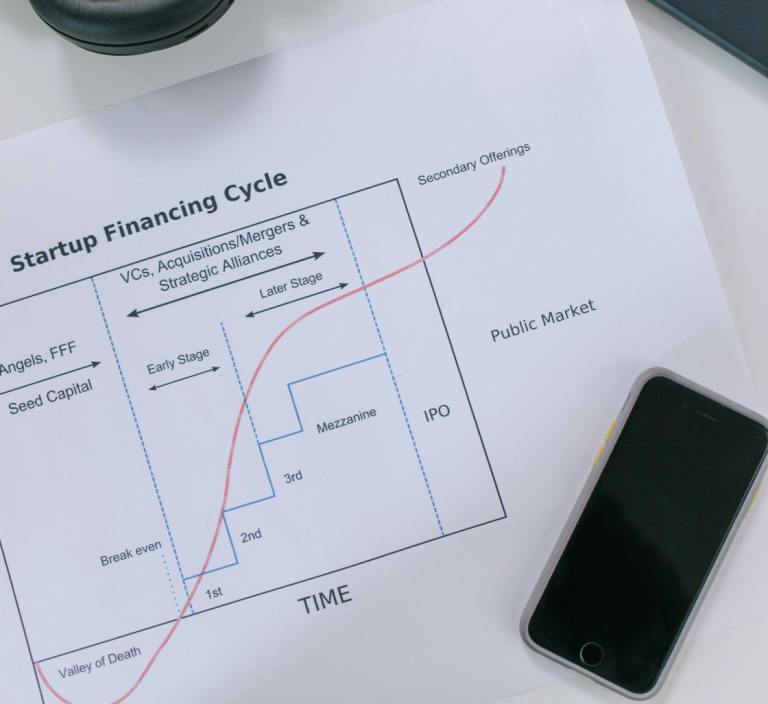A Comprehensive Guide
In today’s fast-paced business environment, companies often face financial challenges that can lead to debt accumulation. When a company’s debt burden becomes unsustainable, corporate debt restructuring (CDR) can be a viable solution. CDR is a process that involves renegotiating the terms of a company’s debt obligations to make them more manageable and sustainable.
In this article, we will delve into the world of corporate debt restructuring, exploring its benefits, types, and the steps involved in the process. We will also discuss the role of stakeholders, including lenders, creditors, and debtors, and provide examples of successful CDR cases.

Benefits of Corporate Debt Restructuring.
Corporate debt restructuring (CDR) offers numerous benefits to companies facing financial difficulties. Some of the most significant advantages of CDR include:
Financial Benefits
- *Reduced Debt Burden*: CDR can help companies reduce their debt obligations, providing immediate relief from debt servicing costs.
- *Improved Cash Flow*: By reducing debt obligations, companies can improve their cash flow, enabling them to invest in growth initiatives and meet their financial obligations.
- *Lower Interest Rates*: CDR can involve negotiating lower interest rates with lenders, reducing the cost of debt servicing.
Operational Benefits
- *Increased Flexibility*: CDR can provide companies with increased flexibility to manage their finances, allowing them to respond to changing market conditions.
- *Improved Financial Management*: CDR can help companies develop more effective financial management strategies, enabling them to better manage their debt obligations and make more informed financial decisions.
- *Enhanced Creditworthiness*: Successful CDR can enhance a company’s creditworthiness, making it easier to access credit in the future.
Strategic Benefits
- *Avoidance of Bankruptcy*: CDR can help companies avoid bankruptcy, preserving their reputation and avoiding the costs associated with formal insolvency proceedings.
- *Preservation of Jobs*: CDR can help companies preserve jobs, maintaining employment and avoiding the social and economic costs associated with job losses.
- *Protection of Assets*: CDR can help companies protect their assets, preventing the loss of valuable assets and preserving their competitive position.
Stakeholder Benefits
- *Lender Benefits*: CDR can provide lenders with a higher recovery rate than formal insolvency proceedings, ensuring they receive a greater proportion of their investment.
- *Creditor Benefits*: CDR can provide creditors with a more predictable and stable payment schedule, reducing the uncertainty associated with formal insolvency proceedings.
- *Employee Benefits*: CDR can provide employees with job security, maintaining their employment and avoiding the uncertainty associated with formal insolvency proceedings.
Other Benefits
- *Reduced Stress*: CDR can reduce the stress associated with managing debt obligations, enabling companies to focus on their core business activities.
- *Improved Morale*: CDR can improve morale, providing companies with a fresh start and a more positive outlook.
- *Increased Competitiveness*: CDR can increase competitiveness, enabling companies to invest in growth initiatives and maintain their competitive position.
Types of Corporate Debt Restructuring
Corporate debt restructuring (CDR) involves renegotiating the terms of a company’s debt obligations to make them more manageable and sustainable. There are several types of CDR, each with its own unique characteristics and objectives. Here are some of the most common types of CDR:
- Debt Rescheduling
Debt rescheduling involves renegotiating the repayment terms of a company’s debt obligations, such as extending the repayment period or reducing interest rates. This type of CDR provides temporary relief from debt servicing costs, allowing the company to recover and rebuild.
- Debt Write-Off
Debt write-off involves writing off a portion of a company’s debt obligations, providing immediate relief from debt servicing costs. This type of CDR is typically used when a company is facing severe financial distress and needs to eliminate debt obligations to survive.
- Debt-for-Equity Swap
Debt-for-equity swap involves exchanging debt obligations for equity in the company. This type of CDR provides a fresh start for the company, eliminating debt obligations and providing a new ownership structure.
- Pre-Packaged Insolvency
Pre-packaged insolvency involves restructuring a company’s debt obligations prior to filing for insolvency. This type of CDR provides a more orderly and controlled process, allowing the company to restructure its debt obligations and emerge from insolvency with a more sustainable financial structure.
- Debt Consolidation
Debt consolidation involves combining multiple debt obligations into a single loan with a lower interest rate and a longer repayment period. This type of CDR simplifies a company’s debt obligations, reducing the complexity and costs associated with managing multiple debts.
- Asset-Based Restructuring
Asset-based restructuring involves using a company’s assets as collateral to secure new debt financing. This type of CDR provides a new source of funding, allowing the company to restructure its debt obligations and invest in new assets and growth initiatives.
- Operational Restructuring
Operational restructuring involves streamlining a company’s operations to reduce costs and improve efficiency. This type of CDR involves renegotiating contracts, reducing staff, and implementing new processes and systems to improve the company’s financial performance.
- Financial Restructuring
Financial restructuring involves renegotiating a company’s debt obligations and equity structure to improve its financial performance. This type of CDR involves debt rescheduling, debt write-off, and debt-for-equity swaps to reduce debt obligations and improve the company’s financial stability.
- Hybrid Restructuring
Hybrid restructuring involves combining multiple types of CDR, such as debt rescheduling, debt write-off, and operational restructuring. This type of CDR provides a comprehensive solution to a company’s financial challenges, addressing multiple issues simultaneously.
- Out-of-Court Restructuring
Out-of-court restructuring involves renegotiating a company’s debt obligations outside of a formal insolvency process. This type of CDR provides a more flexible and efficient solution, allowing the company to restructure its debt obligations without the costs and complexities associated with formal insolvency proceedings.
Steps Involved in Corporate Debt Restructuring
The CDR process typically involves several steps, including:
- _Initial Assessment_: The company’s financial situation is assessed to determine the extent of its debt distress.
- _Stakeholder Engagement_: Lenders, creditors, and other stakeholders are engaged to discuss potential restructuring options.
- _Restructuring Proposal_: A restructuring proposal is developed, outlining the terms of the proposed debt restructuring.
- _Negotiation and Agreement_: The restructuring proposal is negotiated with stakeholders, and a final agreement is reached.
- _Implementation_: The agreed-upon restructuring plan is implemented, providing a fresh start for the company.
Role of Stakeholders in Corporate Debt Restructuring
Stakeholders play a crucial role in the CDR process. Some of the key stakeholders involved in CDR include:
- Lenders_: Lenders provide debt financing to companies and have a vested interest in the company’s financial health.
- Creditors_: Creditors provide goods and services to companies and have a vested interest in the company’s ability to pay its debts.
- Debtors_: Debtors are the companies facing debt distress and seeking to restructure their debt obligations.
- Advisors_: Advisors, such as investment bankers and lawyers, provide guidance and support throughout the CDR process.
Successful Corporate Debt Restructuring Cases
There are many examples of successful CDR cases. Some notable examples include:
- General Motors (2009)
– Debt:* $172 billion
– Restructuring: Debt-for-equity swap, reducing debt by $40 billion
– Outcome: GM emerged from bankruptcy, reduced debt burden, and returned to profitability
- Delta Air Lines (2005)
– Debt: $28.7 billion
– Restructuring: Debt rescheduling, reducing interest rates and extending repayment period
– Outcome: Delta avoided bankruptcy, reduced debt servicing costs, and returned to profitability
- Lehman Brothers (2008)
– Debt: $691 billion
– Restructuring: Debt-for-equity swap, reducing debt by $250 billion
– Outcome: Lehman’s assets were sold off, and the company was wound down in an orderly fashion
- Chrysler (2009)
– Debt: $39.7 billion
– Restructuring: Debt-for-equity swap, reducing debt by $10.5 billion
– Outcome:Chrysler emerged from bankruptcy, reduced debt burden, and returned to profitability
- WorldCom (2002)
– Debt: $41.4 billion
– Restructuring: Debt rescheduling, reducing interest rates and extending repayment period
– Outcome: WorldCom avoided bankruptcy, reduced debt servicing costs, and returned to profitability
- Xerox (2002)
– Debt:$19.6 billion
– Restructuring: Debt rescheduling, reducing interest rates and extending repayment period
– Outcome: Xerox avoided bankruptcy, reduced debt servicing costs, and returned to profitability
- Kodak (2012)
– Debt: $6.75 billion
– Restructuring:Debt-for-equity swap, reducing debt by $2.5 billion
– Outcome: Kodak emerged from bankruptcy, reduced debt burden, and returned to profitability
NEXT: Understanding Snap Finance
- Hostess Brands (2012)
– Debt: $860 million
– Restructuring: Debt-for-equity swap, reducing debt by $440 million
– Outcome: Hostess Brands emerged from bankruptcy, reduced debt burden, and returned to profitability
- American Airlines (2013)
– Debt: $29.6 billion
– Restructuring: Debt rescheduling, reducing interest rates and extending repayment period
– Outcome: American Airlines emerged from bankruptcy, reduced debt burden, and returned to profitability
- RadioShack (2015)
– Debt: $1.39 billion
– Restructuring: Debt-for-equity swap, reducing debt by $650 million
– Outcome: RadioShack emerged from bankruptcy, reduced debt burden, and returned to profitability
These cases demonstrate that corporate debt restructuring can be a successful strategy for companies facing financial difficulties.
Conclusion
Corporate debt restructuring is a complex and nuanced process that requires careful planning, negotiation, and implementation. By understanding the benefits, types, and steps involved in CDR, companies can make informed decisions about their debt obligations and create a more sustainable financial future. Whether through debt rescheduling, debt write-off, or debt-for-equity swap, CDR can provide a fresh start for companies facing debt distress, enabling them to recover, rebuild, and thrive in today’s fast-paced business environment.




